3 Reasons Why You Shouldn’t Air Dry Your Natural Hair
Hood dryer, blow dryer with or without diffuser, or air drying? How you dry your hair is a very personal decision. We encourage you to do what works for your lifestyle and styling goals but there are pros and cons to each method. Although we know that air drying is convenient for many naturals, our professional opinion it has much more cons than pros.
As licensed stylists, we personally prefer to set our clients’ hair under a hood dryer. Why? People pay us their hard earned coins and a wash and go set under a hood dryer can last 4+ days depending on your Essential Elements, styling technique and desired finish. This blog post will explain 3 reasons why you shouldn’t air dry your natural hair.
Reason #1: Air Drying Takes Forever to Dry
Depending on your Essential Elements, especially your density, it can take hours, or even days, for your hair to fully dry. Yes, it is convenient to be able to let your hair dry on its own while you do other things, but it’s not ideal for a long-lasting style. Also, it’s not ideal for your hair to be wet for days at a time due to mildew potentially forming.
#1: It’s Important to Get Regular Maintenance Cuts
Now why as naturals do we still need regular haircuts when we’re not doing a ton of manipulation or heat styling the hair? The reason why is because hair is a fabric. Your hair may be more like wool or may be more like silk but it’s all fabric.
Think about rolling the end of a piece of thread in between your finger. What does it do? It will roll around for a while but eventually the thread gets tangled, knotted, and even will begin to fray. The thickness and surface texture of the thread determines how long it takes for the damage to occur, but ultimately all fabrics will be damaged if the manipulation continues.
The ends are the oldest part of the hair, so it is imperative that we are doing maintenance cuts to thwart any frayed ends from spreading up the hair strand.
P.S. - The frequency of maintenance cuts will vary from person to person, depending on your desired aesthetic and Essential Elements. Someone with a taper could require maintenance cuts every 8 to 10 weeks, whereas someone with bob length hair may be able to go up to 16 weeks until their next cut.
#2: It’s Important to Exercise Grace & Patience
Remember, a licensed stylist can only cut what you allow them to. Depending on your hair care practices prior to starting your natural hair journey, your hair could have a baby crown, mullet or holes.
It’s important to set realistic expectations with a corrective cut and understand that it will take time (could be a few months or years) to get to your desired hair goal. Patience is truly a virtue, coupled with a ton of grace for both yourself and your hair stylist.
#3: It’s Important to Partner with a Licensed Stylist
Pretty much any stylist can cut hair straight, although some are better than others due to training and experience. Blown out cuts take a little adjusting but most stylists that cut can successfully execute these as well.
When it comes to curly cutting, especially on tight coils, curls, and waves (yes very, very, tight hair can be wavy), advanced education and practical experience is required to understand 3-D hair architecture, shape proportions, and finished styling.
In case you didn’t know, we created a free online stylist directory comprised of 200+ independent stylists across the U.S. (even a few abroad) who have taken varying levels of education with our education company for professionals, Cut It Kinky.
Still having trouble finding a licensed professional in your area? Check out this blog post for helpful tips.
Want more tips and guidance for hair cutting? We cover all the natural hair fundamentals and more in our digital consumer education platform, The SeeSomeCurls Visual Library.
Our 1.2K+ course community of tight curl + naturals are shaving more than 50% of time off their wash day, being showered left and right with hair compliments, and are receiving direct support of a very encouraging community of tight curlies + naturals who have been exactly where you are.

